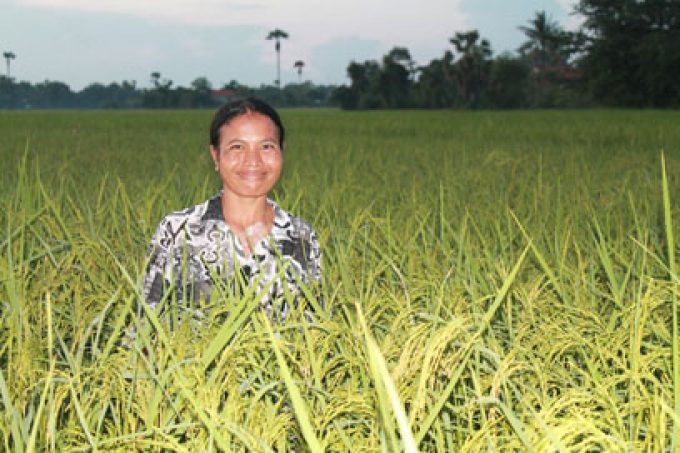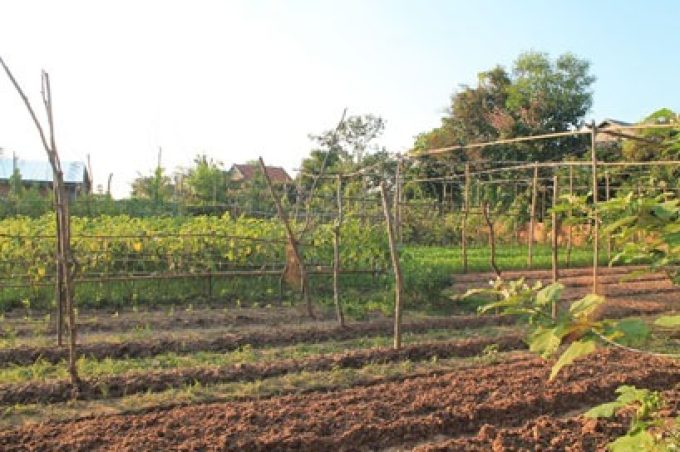Supported by: CEDAC
Location: Cambodia
Fact sheet: Not available
Ms. Nhem Sovannary, a farmer in Po Preah Sang village, Taphem commune, Tramkak district, Takeo province, was awarded first prize in 2013 and third prize in 2014 during the SRI national competitions, organized by CEDAC. She has 1.5 ha of rice fields, 800 m2 homegarden, 8 cattle, 100 chickens and a biogas.
She has collaborated with CEDAC since 2004. She first tested SRI on 0.01 ha out of her total 1.5 ha. She got yield of about 300 kg or 3 t/ha while production from 1.4 ha was about 2800 kg or 2 t/ha. In 2013, she was among 735 farmers who registered to participate in the SRI competition organized by CEDAC. She grown rice with SRI practices on 0.3 ha, and the yield was of 7.33 t/ha, making her a SRI Champion. In 2014, she achieved yield as much as 7.5 t/ha, and she got third prize.
On 0.3 ha plot, she grows two rice crops/year, namely early wet season rice and wet season rice. Early maturing variety was used for early wet season rice, with yield of 6.66 t/ha, and fragrant rice (Jasmine) was used for wet season rice. After the harvest of rice, she grows vegetables (cucumber, water melon, mungbean, and pumpkin), grass for cattle and legumes as green manure on that plot. The net profit generated from this 0.3 ha was about 2,000USD. The cropping patterns and economic analysis is shown in the following table:
| Crops | Plantation time | Production (kg) | Production cost ($) | Gross revenue ($) | Net profit ($) |
| Cucumber, water melon, mungbean, and pumpkin | 1-Dec-13 | 13 | 375 | 363 | |
| Sweet potato | 29-Dec-13 | 5 | 63 | 58 | |
| Forage | 1-Apr-14 | 5 | 100 | 95 | |
| Legume as green manure | 1-Apr-14 | 8 | – | (8) | |
| Early wet season rice | 2-May-14 | 2,000 | 25 | 750 | 725 |
| Wet season rice | 15-Aug-14 | 2,250 | 173 | 900 | 728 |
| Total | 228 | 2,188 | 1,960 |
At the backyard of her residence, she grows diversified vegetables on 800 m2, to make year-round supply to CEDAC shop. The gross revenue from vegetables are about 200-300$/month. There are no major expenses in vegetable production except electricity cost for watering and seeds for few crops. While growing vegetables is economically attractive than rice, this year, she has invested 8,500$ (with some loan) for digging a pond of 3,000 m2 in the rice field, and use the dug soil to raise bed for vegetable growing.
In both rice and vegetable production, there is no use of chemical inputs. She produces liquid and solid compost from animal manure, biodigestate and crop residues.




